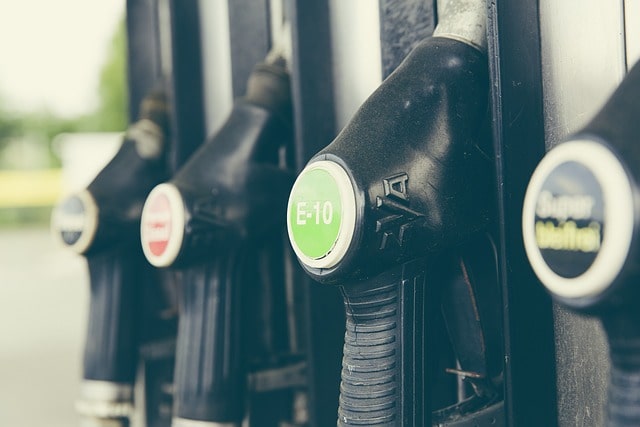
Social media has emerged as a powerful tool for driving conversations and change, particularly in the realm of environmental politics. In this age of digital activism, Instagram, one of the most popular photo-sharing platforms, plays a unique role in shaping the discourse around eco-friendly policies, fuel and fuel costs, and eco-conscious candidates. However, navigating the complex landscape of environmental politics on Instagram presents both challenges and opportunities. In this article, we’ll explore how Instagram has become a pivotal player in the environmental politics arena and delve into the strategies needed to promote sustainable practices and candidates. We’ll also touch on a practical tip for accessing Instagram after changing phone number.
Instagram’s Role in Environmental Politics
Visual Storytelling
Instagram is renowned for its visual storytelling capabilities. Users can post images and videos, which makes it an ideal platform for showcasing the beauty of our planet and the environmental challenges it faces. Environmental activists and organizations use this feature to convey their message effectively and emotionally. Whether it’s a picture of a pristine beach, a devastated forest, or an endangered species, these visuals trigger empathy and drive people to engage with environmental causes.
Hashtags as a Unifying Force
Hashtags on Instagram are more than just trends; they are the connective tissue that binds communities passionate about the environment. For instance, #ClimateAction, #EcoFriendly, and #RenewableEnergy are among the thousands of hashtags that users employ to discover, discuss, and promote eco-friendly policies and candidates. When used strategically, these hashtags amplify the reach of posts and help in mobilizing public opinion.
Challenges in Promoting Eco-Friendly Policies
Information Overload
The sheer volume of content on Instagram can sometimes make it challenging for environmental messages to stand out. Users are bombarded with a multitude of images and captions daily, and amidst the noise, important environmental issues might get lost. This underscores the importance of crafting compelling and eye-catching content that captures attention.
Echo Chambers
Social media, including Instagram, often exacerbates echo chambers where like-minded users interact with each other, reinforcing their existing beliefs. This can limit the reach of eco-conscious content, as it may not reach individuals who hold differing views. Bridging this gap and engaging with a broader audience is a constant struggle.
Seizing Opportunities for Change
Collaborative Initiatives
Instagram offers opportunities for collaborative initiatives among environmental advocates, activists, and organizations. Cross-promotion and partnerships can significantly extend the reach of eco-friendly policies and candidates. When influencers and activists team up to create content, it can break through echo chambers and reach a wider, more diverse audience.
Engaging with Local Issues
Environmental politics aren’t limited to national or international matters. Instagram provides a platform to address local concerns, such as air quality, deforestation, and water pollution. By connecting with followers on these issues, individuals and organizations can effect change from the ground up.
A Tip for Changing Your Phone Number on Instagram
Changing your phone number on Instagram is a straightforward process, but it’s important to ensure a smooth transition to continue advocating for environmental causes:
- Open Instagram: Launch the Instagram app on your mobile device.
- Profile: Tap on your profile icon, typically located at the bottom right of the screen.
- Settings: Access your settings by tapping the three horizontal lines in the upper right corner (Android) or the gear icon (iOS).
- Account: Select the “Account” option from the list.
- Phone Number: Tap on “Phone Number.”
- Change: Here, you can edit your phone number to update it.
By following these steps, you can seamlessly continue your environmental advocacy efforts on Instagram even after changing your phone number.
READ ALSO: 10 Common Fuel Myths Debunked on TikTok
Conclusion
Instagram has emerged as a powerful platform for shaping the discourse on environmental politics, fuel, and eco-conscious candidates. While challenges like information overload and echo chambers persist, the opportunities for change through visual storytelling, strategic hashtag usage, collaborative initiatives, and engagement with local issues are substantial. By harnessing the unique features of Instagram, we can foster a more eco-conscious world one post at a time.
In a world that is increasingly interconnected, Instagram’s influence on environmental politics is undeniable. By understanding its strengths and weaknesses, we can harness its power to create a more sustainable future.




 Moreover, there are other costs contributing to the prices of fuel, which retailers are trying to pass on to customers in order to maintain their profit margin.
Moreover, there are other costs contributing to the prices of fuel, which retailers are trying to pass on to customers in order to maintain their profit margin. Checking your tire pressure for over or under inflation can help correct the amount of fuel consumed while travelling. Monitoring your tires for adequate pressure can ensure safe travel. Overinflated tires on the other hand, have increased traction that can raise fuel consumption by at least 10%.
Checking your tire pressure for over or under inflation can help correct the amount of fuel consumed while travelling. Monitoring your tires for adequate pressure can ensure safe travel. Overinflated tires on the other hand, have increased traction that can raise fuel consumption by at least 10%.




 The volatile oil sector has left behind numerous deserted oil wells all over the US, a reminder of the industry’s past peaks and drops. As companies go bankrupt, they often abandon these wells, leaving them to leak toxic chemicals into the soil and groundwater. The problem is becoming increasingly severe as
The volatile oil sector has left behind numerous deserted oil wells all over the US, a reminder of the industry’s past peaks and drops. As companies go bankrupt, they often abandon these wells, leaving them to leak toxic chemicals into the soil and groundwater. The problem is becoming increasingly severe as 